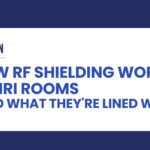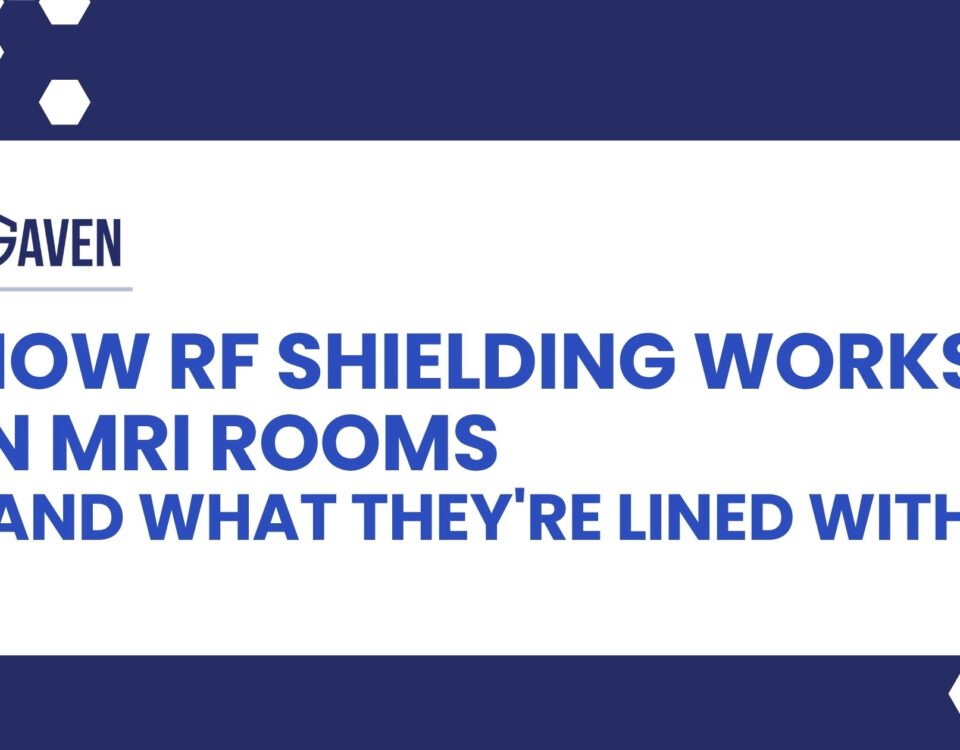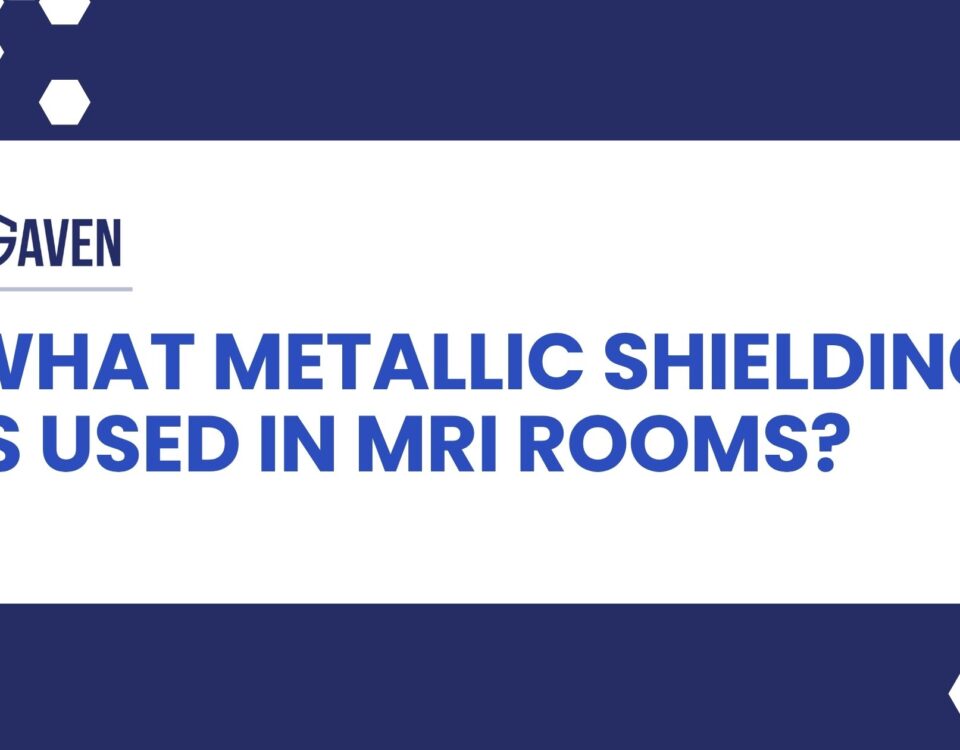


How RF Shielding Works in MRI Rooms (and What They’re Lined With)
July 8, 2025


HVAC Waveguides
December 8, 2025MRI technology delivers some of the most precise and noninvasive diagnostic images in medicine. But the clarity and safety of those scans rely on something most patients never see: a carefully engineered shielding system built into the walls, floors, and ceilings of the MRI suite.
So why are MRI rooms shielded? Because without shielding, everything from image quality to patient safety would be compromised.
Shielding protects against both radiofrequency (RF) interference and magnetic field exposure. It ensures diagnostic integrity, safeguards nearby equipment, and keeps the room in compliance with national healthcare construction standards.
To understand how these systems work in harmony, start with our MRI Shielding page. For insights into how real-world applications are implemented, explore what distinguishes top-tier MRI shielding companies like Gaven Industries.
What is the role of radio waves in MRI?
At the heart of every MRI scan is a precise manipulation of energy. MRI machines generate a powerful static magnetic field, which aligns hydrogen atoms in the body. Short bursts of radiofrequency (RF) waves are then transmitted into the patient, exciting these atoms and causing them to emit detectable signals.
These signals are collected and translated into high-resolution anatomical images.
However, because the MRI signal is extremely sensitive, external RF noise—from things like cell phones, Wi-Fi networks, or nearby broadcasting towers (like for AM/FM radio)—can disrupt this process. Even small levels of interference can result in blurry images, incorrect diagnostics, or the need to repeat scans.
That’s why RF shielding is essential. It creates a controlled environment where MRI radio waves can operate without contamination or distortion.
What are the two types of shielding in MRI?
Shielding in MRI suites falls into two distinct categories, each targeting a different kind of interference:
1. RF Shielding
This form of shielding is focused on blocking electromagnetic signals from entering or exiting the MRI room. Typically achieved with copper or galvanized steel panels, RF shielding is engineered to form a Faraday cage—a continuous conductive enclosure that isolates the room from ambient radio waves.
2. Magnetic Shielding
Unlike RF, magnetic shielding is designed to contain the static magnetic fringe field produced by the scanner itself. This is especially important in hospitals, where nearby elevators, control rooms, or operating suites could be affected by stray magnetic forces.
Together, these systems achieve the overarching MRI shielding purpose: maintaining scan quality, protecting adjacent infrastructure, and ensuring the safety of everyone on site.
What role does RF shielding play in the MRI environment?
RF shielding isn’t just about blocking unwanted noise—it’s about enabling the MRI to work at full capacity. Inside an RF-shielded room:
- The signal-to-noise ratio (SNR) is maximized, enhancing image sharpness and diagnostic clarity.
- External interference from cell towers, routers, elevators, and even fluorescent lights is kept out.
- The system itself is contained—RF signals generated by the scanner don’t leak into adjacent areas.
This is achieved using highly conductive materials, with every wall, floor, and ceiling lined with copper or galvanized steel. All penetrations—like power lines, data conduits, HVAC, and medical gases—are equipped with RF filters for MRI rooms to preserve the integrity of the Faraday cage.
“You’re not just shielding a room—you’re building a lab-grade isolation chamber in the middle of a hospital. That’s the level of precision MRI requires.”
— John J. Gaviglia, Founder, Gaven Industries
What role does electromagnetic shielding play in the MRI environment?
Electromagnetic shielding in MRI rooms is a holistic system. It includes:
- RF shielding to protect imaging signals
- Magnetic shielding to control the spatial footprint of the static field
- Filtered penetrations and waveguides to maintain barrier continuity
- Grounding systems to ensure electrical and magnetic stability
Together, these components form a protective barrier that preserves MRI performance, even in dense hospital infrastructure.
Without effective shielding, facilities risk:
- Failed scans due to image artifacts or interference
- Unsafe exposure in areas where the magnetic field exceeds the 5 Gauss threshold
- Compliance violations with NFPA, ACR, and OEM commissioning guidelines
That’s why Gaven Industries works directly with architects, MRI manufacturers, hospital engineering teams, and general contractors to design shielding that’s not just effective—it’s code-compliant, verifiable, and future-proof.
Shielding is not an accessory—it’s a requirement
Whether you’re building a new imaging center or retrofitting an existing room, shielding isn’t a line item—it’s a foundational system that defines everything else.
- The layout of the suite
- The location of adjacent rooms
- The safety zoning and compliance documentation
- Even the comfort and trust of the patient
It all depends on shielding that works.
Gaven Industries approaches every shielding project as a critical systems installation. From selecting the right materials to field-verifying performance using IEEE-299 and MIL-STD-285 testing, we deliver shielding that meets the most demanding clinical and regulatory expectations.
“The success of every MRI scan begins with what’s behind the walls. That’s where our work lives.”
— John J. Gaviglia, Founder, Gaven Industries

Protecting imaging quality and safety starts with the right shielding strategy. Gaven Industries leads the way in MRI Shielding solutions. Explore our expert services and learn why top MRI shielding companies trust us for fully compliant, high-performance shielding systems.




